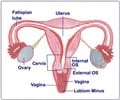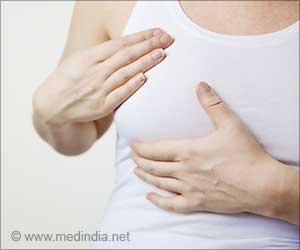According to a study, age at onset of menarche (first menstrual cycle) is associated with increased body mass index (BMI), waist circumference, and overall obesity in adulthood.

"The purpose of this study was to examine whether female reproductive risk factors – including onset of menarche, number of births over a lifetime (called parity), onset of menopause, and menopausal status – are associated with indices of body fat composition," said Caroline S. Fox, MD, MPH, of the National Heart, Lung, and Blood Institute, and senior author of the study. "We found that earlier onset of menarche is associated with overall adiposity, whereas parity and menopausal age were not associated with adiposity measures. Post-menopausal women also had higher levels of overall adiposity, though this appeared to be mostly due to age and not menopausal status."
The study featured 1,638 women who participated in the Framingham Heart Study (FHS) between 2002 and 2005. These participants were aged 40 or older, weighed less than 160 kg and not pregnant. Study participants underwent a physical exam along with laboratory analyses to measure visceral adiposity (VAT, the "belly fat" around the abdomen) and subcutaneous adiposity (SAT, the fat under the skin). The study modeled the relationship between VAT, SAT, and female reproductive factors after adjusting for age, smoking status, alcohol intake, physical activity index, hormone replacement therapy and menopausal status. Results of the study showed the timing of the first menstrual cycle was associated with generalized but not regional body fat depots.
"This research suggests that select female reproductive risk factors, specifically onset of menarche, are associated with overall adiposity, but not with specific indices of body fat distribution," said Dr. Subbulaxmi Trikudanathan, of Harvard Medical School in Boston, MA, and lead author of the study . "Ultimately, the important question is whether female reproductive risk factors can be used to target lifestyle interventions in high risk women to prevent the metabolic consequences of obesity and cardiovascular disease."
Source-Eurekalert
 MEDINDIA
MEDINDIA




 Email
Email










